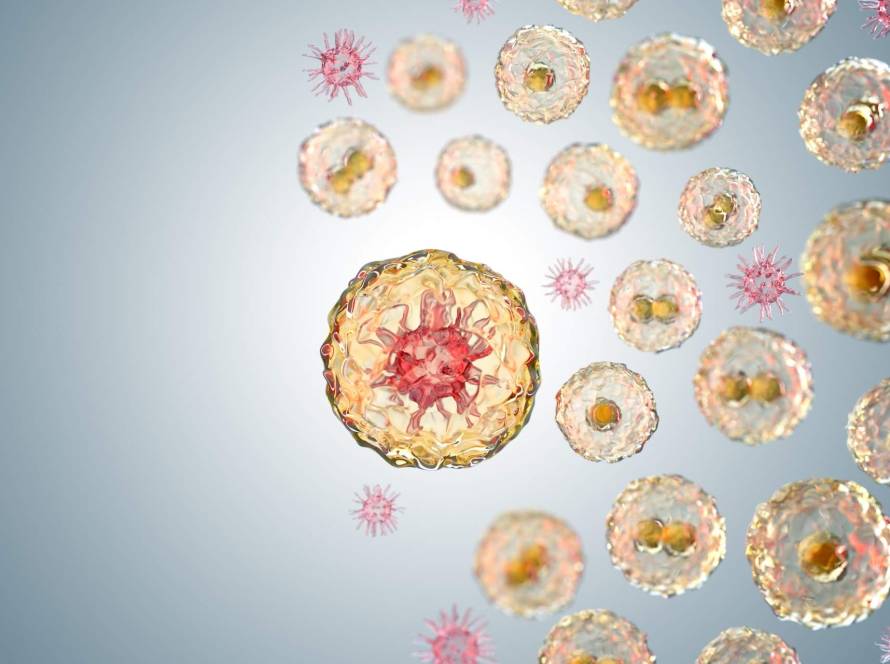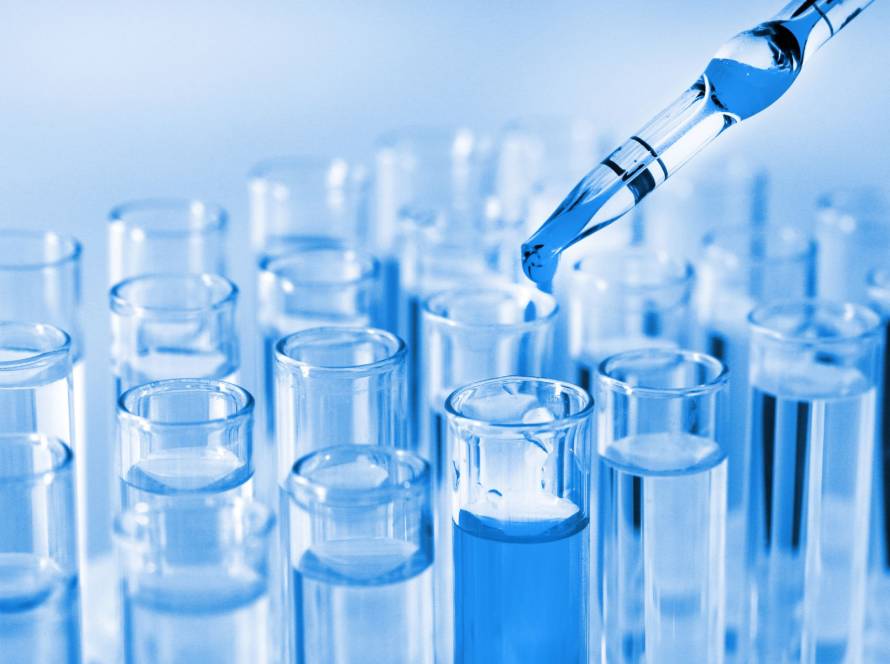The Golgi apparatus stands out as one of the most intriguing parts of cellular biology. This key organelle contains up to 1000 different proteins in mammalian cells and acts as a vital processing hub.
Scientists have found that the Golgi apparatus’s health directly impacts human wellbeing. When this organelle breaks down or malfunctions, it can lead to neurodegenerative conditions like Alzheimer’s, Parkinson’s and Huntington’s disease, as well as various cancers. This piece explores the structure and function of the Golgi apparatus.
What is the Golgi apparatus?
The Golgi apparatus stands as a fundamental organelle that cell biologists worldwide still find fascinating, even though scientists found that there was its existence over a century ago. This vital cellular component acts as a processing and distribution center that handles proteins and lipids after their synthesis.
Location and presence in eukaryotic cells
Eukaryotic cells (cells with clearly defined nuclei) contain the Golgi apparatus, which consists of flattened, stacked pouches called cisternae. A single Golgi apparatus sits near the cell nucleus and close to the centrosome in mammals. Microtubules determine this position, the Golgi complex spreads into individual stacks throughout the cytoplasm when scientists depolymerize these structures.
The distribution and number of Golgi bodies differ among species. Mammalian cells often show several interconnected stacks that form ribbon-like structures. Most single celled lower eukaryotes have just one Golgi stack per cell. Plant cells and Drosophila show a different pattern with multiple scattered Golgi stacks in their cytosol. Some plant cells can have hundreds of these organelles.
Relationship with the endoplasmic reticulum
The Golgi apparatus works closely with the endoplasmic reticulum (ER). The Golgi sits next to ER exit sites and receives proteins through the ER-Golgi intermediate compartment or ERGIC.
The Golgi’s distinct polarity in structure and function makes it unique. Proteins enter through its cis face (entry face), which curves outward and typically faces the nucleus. They move through:
- The cis Golgi network (receiving proteins from ER);
- The medial compartment (where most metabolic activities occur);
- The trans compartment;
- The trans Golgi network (exit face).
This sequential arrangement allows specific processing and sorting events to happen in order. The trans Golgi network directs modified proteins, lipids and polysaccharides to lysosomes, the plasma membrane or outside the cell.
Structure of the Golgi apparatus
The Golgi apparatus’s amazing architecture shows a well-structured system that powers cellular processing. Its unique shape sets it apart from other organelles and enables sophisticated sorting and modification capabilities.
Cisternae: the flattened membrane sacs
The Golgi apparatus’s core contains flattened membrane-enclosed sacs called cisternae that stack like pancakes. These cisternae numbers vary substantially between species. Mammalian cells usually have 4-8 cisternae in each stack, while some unicellular flagellates can pack up to 60. These cisternae work together as a processing factory where proteins and lipids go through extensive changes. Plant cells can have hundreds of individual Golgi stacks throughout their cytoplasm.
Cis, medial and trans regions
The Golgi apparatus has three main compartments between its “cis” face and “trans” face. Each segment contains different enzymes that make them biochemically unique:
- The cis Golgi network (CGN): faces the nucleus and connects to the endoplasmic reticulum;
- The cis-Golgi: first major processing area;
- The medial-Golgi: central processing region;
- The trans-Golgi: final processing area;
- The trans Golgi network (TGN): exit point for vesicles.
This setup creates a smooth flow that processes molecules step by step.
Golgi polarity and vesicle traffic
The Golgi’s structure and function show clear polarity. Proteins enter from the ER at its convex cis face, which points toward the nucleus. These proteins move through the Golgi and leave from the concave trans face. The cis and trans Golgi networks sort proteins that the organelle receives or releases.
Golgi matrix proteins and tethering factors
Matrix proteins hold the cisternae together, while cytoplasmic microtubules support the entire structure. Matrix proteins also create support between adjacent cisternae to maintain the Golgi stack’s stability. Some matrix proteins create filament-like tethers that keep transport vesicles close to the organelle. These matrix proteins undergo phosphorylation during cell division, which causes the Golgi to break apart and spread before it rebuilds in daughter cells.
Functions of the Golgi apparatus
The Golgi apparatus shows remarkable complexity in its structure. This amazing organelle coordinates everything from protein modification to cellular signaling that maintains health and homeostasis.
Protein modification and glycosylation
The Golgi apparatus is a major processing center where proteins undergo glycosylation. Proteins receive carbohydrates here to form glycoproteins. Glycosyltransferases work in sequence to add different sugar groups to proteins. The ER attaches N-linked oligosaccharides that later get modified in the Golgi through ordered reactions. During this process, the cell removes mannose residues and adds N-acetylglucosamine, fucose, galactose and sialic acid residues. Proteins leave the Golgi with different N-linked oligosaccharides. These changes are vital for protein function, stability and targeting.
Sorting and packaging of proteins and lipids
The Golgi apparatus processes and sorts proteins and lipids into transport vesicles for delivery. The trans-Golgi network acts like a sorting station. It directs molecules to lysosomes, endosomes, the plasma membrane, or marks them for secretion. Lysosomal proteins get mannose-6-phosphate markers that guide them to lysosomes. Other proteins contain specific signal sequences that determine where they should go.
Lipid metabolism and glycolipid synthesis
The Golgi’s role in lipid metabolism is vital, especially in making glycolipids and sphingomyelin. The ER produces ceramide that serves as the building block for these lipids. Sphingomyelin forms when phosphatidylcholine transfers a phosphorylcholine group to ceramide. Glycolipids develop as carbohydrates attach to ceramide. These lipids end up in the exterior half of the plasma membrane with their polar head groups facing the cell surface.
Role in secretion and exocytosis
The Golgi apparatus packages proteins for secretion through two main pathways:
- Constitutive secretory pathway: continuous delivery of proteins to the plasma membrane;
- Regulated secretory pathway: release triggered by specific signals, such as hormones.
Involvement in autophagy and apoptosis
The Golgi does more than transport, it participates in autophagy and apoptosis. The Golgi fragments during cellular stress and triggers various response pathways. This links the Golgi’s function to cell survival decisions.
Calcium homeostasis and signaling
The Golgi stores and releases calcium ions to participate in calcium signaling. Calcium pumps like SPCA1 and calcium binding proteins like Cab45 control these functions. This process influences how proteins sort and move through the cell.
Why the Golgi matters for cellular health
The Golgi apparatus’s proper function plays a crucial role in cellular health and disease prevention. Malfunctions in this complex organelle can affect the entire body and lead to various pathological conditions.
How Golgi dysfunction affects neurodegenerative diseases
Research shows that the Golgi apparatus undergoes major structural and functional changes in several neurodegenerative diseases such as Amyotrophic Lateral Sclerosis, Alzheimer’s, Parkinson’s, Huntington’s, Creutzfeldt-Jacob disease and multiple system atrophy. These alterations aren’t just results of neurodegeneration but appear early in the pathological cascade, before other neuronal changes. The way Golgi dysfunction affects neuronal physiology involves damaged transport to axons, dendrites and synapses, which leads to stress responses that can cause neuronal death.
Golgi fragmentation in Parkinson’s and Alzheimer’s
Golgi fragmentation, where the Golgi ribbon breaks into isolated elements, occurs in neurons affected by both Parkinson’s and Alzheimer’s diseases. This process starts before patients show clinical symptoms or other pathological changes.
The fragmentation in Alzheimer’s disease happens because Cdk5 phosphorylates the Golgi structural protein GRASP65. This process speeds up amyloid precursor protein (APP) trafficking and creates more toxic Aβ peptides, which creates a destructive feedback loop. Neurons with Lewy bodies in Parkinson’s disease typically show fragmented Golgi structures.
Links to cancer and immune disorders
Golgi apparatus abnormalities play key roles in cancer progression. Cancer cell invasion in prostate, breast and gastric cancers depends on abnormal Golgi glycosylation. These glycosylation changes affect basic processes like cell signaling, cancer cell dissociation, angiogenesis and metastasis. Golgi proteins such as GOLPH3 and GM130 help tumors grow by enhancing growth-factor-induced mTOR signaling and making cells migrate more easily.
Golgi stress and ER stress crosstalk
The Golgi experiences changes from pharmacological or oxidative stress that include cargo overloading, ionic imbalance and abnormal luminal acidity. Scientists call these changes “Golgi stress,” which triggers specific response pathways to fix the damage. Long term ER and Golgi stress can activate caspase-3 and potentially kill cells. The complex relationship between Golgi and ER stress responses shows how cellular stress management systems work together.
The Golgi apparatus stands out as a key organelle that maintains cellular health and can influence longevity. Our deep dive shows this remarkable structure does much more than just package cellular materials. In fact, the Golgi’s work in protein modification, lipid metabolism, calcium signaling and vesicular transport shows how vital it is to cellular balance.


